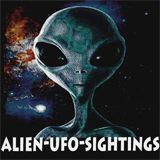The Possibility of Alien Life Forms and Unidentified Aerial Phenomena: Modern History of UFOs
If any one of the cases described above are accurate descriptions of real events, the implications would be overwhelming; however, these noteworthy cases alone cannot lead to the conclusion that humans have been visited by aliens. Undoubtedly, suspicion may surround these notable cases based on the large number of hoaxes related to Unidentified Flying Objects and alleged alien encounters.
Others may question why aliens are not choosing to appear now if humans have allegedly encountered them in the past. Consequently, it is only logical to doubt UFO accounts and investigate how, when, and where these stories of Unidentified Flying Objects or “alien ships” originated regardless of the recent video disclosure by the Navy. In order to address this, the extensive history of UFO phenomena will be explored in this section.
Modern Pilots and UFOs
On April 12, 1969, two pilots in Pori, Finland named Jouko Kuronen and Tarmo Tukeva reported seven plate-shaped objects in a formation that flew at “ällistyttävällä” (incredible) speeds; the objects were later detected via radar nearly 200 kilometers away in Vaasa. This particular sighting was acknowledged by the Finnish Air Force and published in Ruotuväki (2012), the Finnish Defense Forces’ magazine. Comparably, on November 11, 1979 in Manises, Spain, the crew of TAE-SE 210 and the Air Force Captain of Mirage F1 testified that they witnessed red dome-shaped objects that accelerated and vanished in the sky (Guardian, 2015; COPE, 2019; Cuatro, 2019).
Other similar testimonies have come from pilots around the world. On March 31, 1980, four Korean pilots were given orders to chase an Unidentified Flying Object during Team Spirit, a joint military training exercise between the United States and South Korea. Korean Air Vice Marshal Im Byungsun spoke of closely witnessing an object flying at a trajectory that was rendered impossible by the limits of man-made technology (Jung, 2016; JTBC Culture, 2019). He stated, “The Unidentified Flying Object was disc-shaped and as big as three McDonnell Douglas F-4 Phantom IIs. It was strongly emitting sparks and lights from the core.
The color was similar to what one would see in oxy-fuel welding.” The sighting was further corroborated by Air Force colonel Lee Seungbae and Air force colonel Park Osang. On July, 31, 1995, near Bariloche Airport in Argentina, witnesses such as Captain Jorge Polanco from a Boeing 727, Air Force Major Jorge Luis Oviedo, and the crew of the GN705 (Argentine National Gendarmerie) including Juan Domingo Gaitán and Rubén Cipuzak, reported an intense light that “did not move according to the laws of physics that we know” (se mueve bajo como reglas físicas que nosotros no manejamos) (AFP, 1995; Crónica, 1995; Investigación X, 1996; El Coldillerano, 2013). The observers from the Boeing 727 noted that the object had two green lights at the end
Although a number of UFO sightings by modern pilots around the world are well-acknowledged, official records are not synonymous with every encounter. Air & Space Magazine (2015) explains that for a pilot, “filing a UFO report can potentially hurt one’s career.” Christopher Mellon, a former Deputy Assistant Secretary of Defense for Intelligence in the Clinton and Bush administrations, explains that pilots tend not to speak up about UFOs and worry that reporting such events will adversely affect them (Paul, 2019; Koren, 2019). Well-known examples are the Milton Torres UFO encounter and the Japan Airlines Flight 1628 incident.
In 1957, Milton Torres, the pilot of an F-86D Sabre jet, was ordered to fire at an Unidentified Flying Object (Griffiths, 2008; Spangler, 2008). This particular object that was “not made of this Earth” vanished before the pilot could shoot, and Torres was debriefed that he would be breaching national security if he were to discuss what happened. Similarly, in 1987, the Japanese crew of a JAL Boeing 747 reported three Unidentified Flying Objects, one of which Captain Kenju Terauchi nicknamed the “Mothership” (UPI, 1987). The follow-up investigation concluded that the crew was “normal, professional, rational, (and had) no drug or alcohol involvement.” The Captain, however, was grounded for talking to the press openly about UFOs even though he was a veteran pilot with 29 years of experience (UPI, 1987; Lean, 2001).
Furthermore, pilots themselves often avoid unwanted publicity and any stigma associated with aliens (Phelan, 2019; Ruppelt, 2011). Richard Haines, a former senior research scientist at NASA’s Ames Research Center explains that only a small percentage of incidents are ever reported, in part because professional pilots fear ridicule and potential damage to their careers (Morella, 2012). Joseph Gradisher, spokesperson for the Deputy Chief of Naval Operations for Information Warfare, clarifies that the term “UFO” itself discourages pilots from reporting incidents for fear of being ridiculed (Rodriguez, 2019). Nevertheless, a number of pilot encounters with UFOs are verifiable and well-established. They have been witnessed by military pilots, commercial airline pilots, two pilots in different planes, pilots and passengers in the same plane, a U.S. Navy pilot commander, and a veteran pilot that worked with former President Obama (Cot, 2007; Danziger, 2018; Rohrer, 2007; CBS News, 2018; AP News, 1985; Specktor, 2018)
